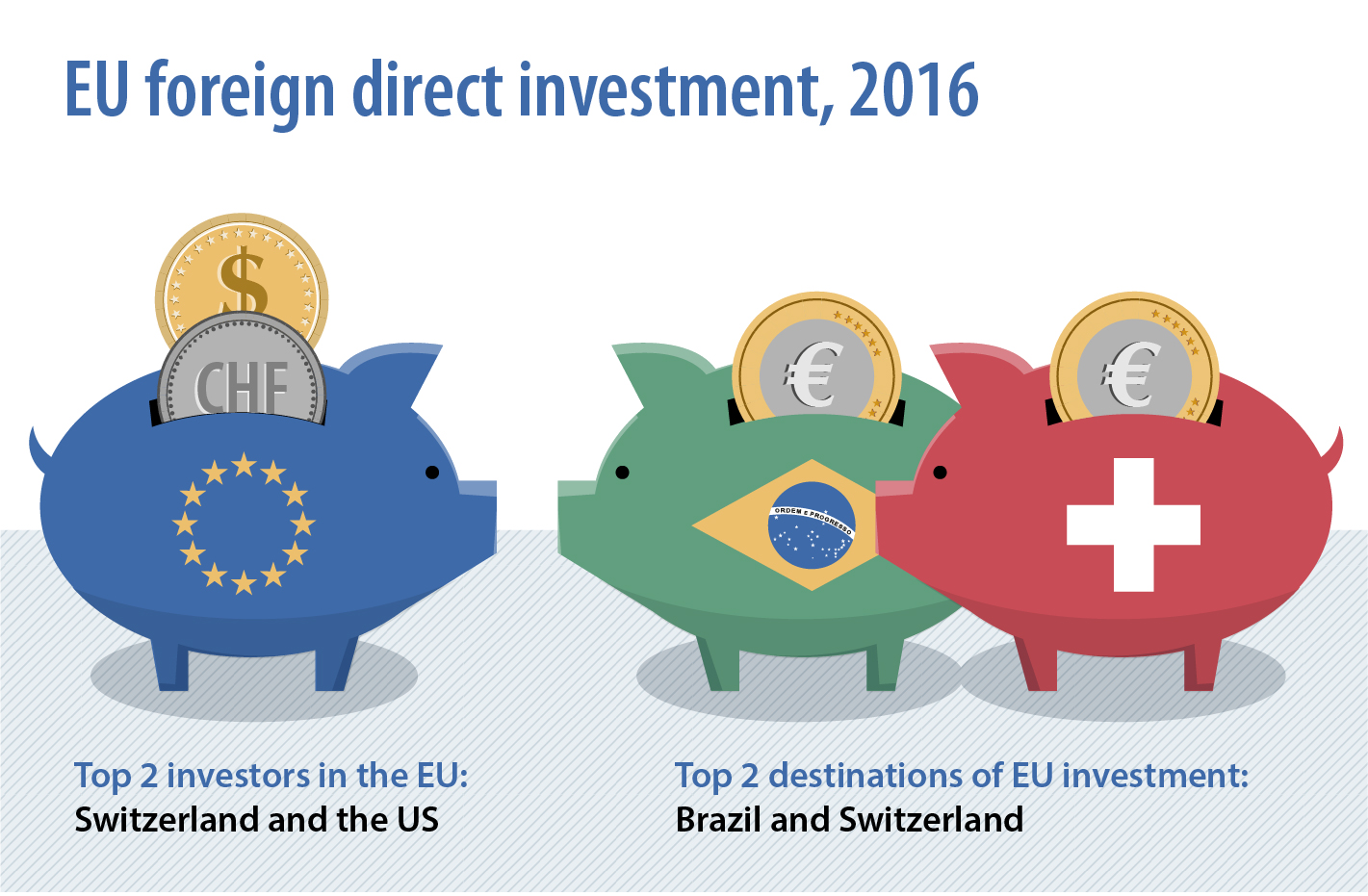According to preliminary results, Foreign Direct Investment (FDI) from the European Union (EU) to the rest of the world amounted to €186 billion in 2016, a sharp drop (-68%) compared with the €585 bn recorded in 2015.
In the opposite direction, investment from the rest of the world into the EU stood at €280 bn, down by 41% compared with 2015 (€476 bn).
The EU-US FDI relationship weakened in 2016
As a long-standing key partner, the United States was principally behind the overall decrease in FDI flows in 2016. The EU recorded a net disinvestment by its resident entities on the US market in 2016 (-€94 bn, compared with +€352 bn in 2015). Meanwhile, US direct investors significantly reduced (-76%) their net acquisitions within the EU, from €223 bn in 2015 to €54 bn in 2016.
A notable net disinvestment by EU companies was also registered in 2016 with Canada (-€17 bn) and, to a lesser extent, Russia (-€6 bn). As a result, Brazil was the main beneficiary of EU FDI (€33 bn) in 2016, ahead of Switzerland (€21 bn) and offshore financial centres* (€14 bn).
As for inward flows, the two main investors into the EU in 2016 were Switzerland (€55 bn) and the United States (€54 bn), followed at a distance by offshore financial centres* (€36 bn), Japan (€28 bn) and Canada (€20 bn).
The FDI figures presented in this news item are estimates based on the latest quarterly data transmission by the EU Member States, from which the annualised assets and liabilities have been allocated according to the directional principle (outward or inward). 2016 detailed annual FDI data will be published by Eurostat in December 2017.
* Offshore Financial Centres (OFC) is an aggregate which includes 40 countries. As examples, the aggregate contains European financial centres, such as Liechtenstein, Guernsey, Jersey, the Isle of Man, Andorra and Gibraltar; Central American OFC such as Panama and Caribbean islands like Bermuda, the Bahamas, the Cayman Islands and the Virgin Islands; and Asian OFC such as Bahrain, Hong Kong, Singapore and Philippines.


